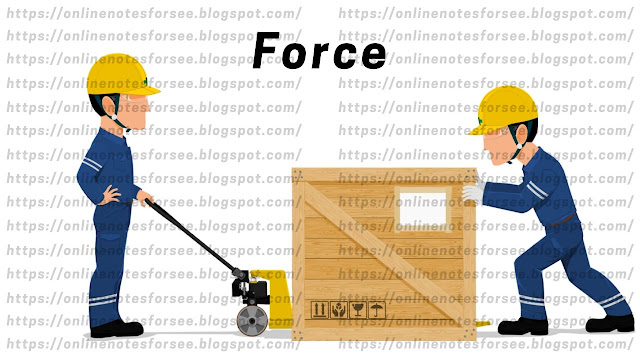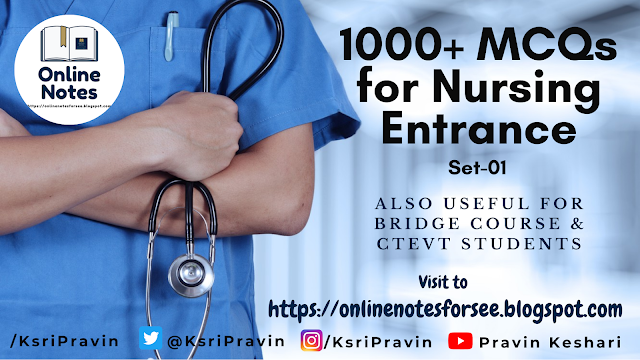Human Nervous and Glandular system || Solved Q/A to practice for S.E.E. - Exam || Part-2
Human Nervous and Glandular System
Part-1
Very short questions and answers for S.E.E. students
Questions and answers to practice for S.E.E. examination
1) Write down the function of sympathetic nervous system.
Answer: The
function of sympathetic nervous system is to increase the working of heart,
lungs, stomach, intestine and urinary bladder.
2) What is the function of parasympathetic nervous system.
Answer: The function of parasympathetic nervous system is to bring the activities of heart, lungs, stomach, intestine and urinary bladder under normal condition.
3) What is an impulse? Give any one example.
Answer: An impulse is a wave of electrical disturbance that sweeps over the nerve cells, e.g., impulse of touch.
4) What are effector organs? Give examples.
Answer: Effector organs are the organs which become stimulated on receiving the impulse, e.g. eye, tongue, etc.
5) How much percentage of the brain does cerebrum occupy?
Answer: Cerebrum occupies about 80% of the brain.
6) What happens when cerebrum stops working?
Answer: When cerebrum stops working, the person enters coma stage.
7) What is mid-brain? Where is it located?
Answer: Mid-brain is a thick-walled structure which constitutes a small middle portion of the brain. It is located between cerebrum and pons varoli,
8) Which hormone is responsible for the balance of calcium level in bone?
Answer: Calcitonin balances the level of calcium in bones.
9) Which hormone is responsible for the maintenance of level of sugar in blood?
Answer: Insulin maintains the level of sugar in blood.
10) Write any two effects of hyposecretion of insulin.
Answer: Any two effects of hyposecretion of insulin are:
(i) High level of sugar content in blood.
(ii) Thrist and hunger.
11) Write down the function of testosterone.
Answer: The testosterone controls the development of secondary sexual characteristics in male like enlargement of penis and scrotum, growth of facial and pubic hair, enlargement of larynx, deeper voice, etc.
12) What disorders are caused due to under secretion and over secretion of parathormone hormone?
Answer: Under secretion of parathormone hormone causes painful jerk of voluntary muscles while over secretion of it results in softening of bones that could be fractured easily.
13) What are hormones?
Answer: Hormones are the chemical messengers (regulators) which control, co-ordinate and integrate the functions of various organs of the body.
14) Name the hormone that is produced by thyroid gland.
Answer: The hormone that is produced by thyroid gland is thyroxin.
15) Write name of two hormones produced by pituitary gland.
Answer: Two hormones produced by pituitary gland are:
(i) Growth hormone
(ii) Catalytic hormone or stimulating hormone.
16) Where is thyroid gland located in human body?
Answer: Thyroid gland is located in the neck region in front of the trachea just below the larynx.
17) Where are parathyroid gland located? Write down their shape.
Answer: Two pairs of parathyroid glands are present on the dorsal side of thyroid gland. Parathyroid gland is oval in shape.
18) Name the hormone secreted by parathyroid gland with its function.
Answer: Parathyroid gland secrets a hormone called parathormone (parathyroid) hormone. Parathormone controls the exchange of calcium between blood and bones and also increases the level of calcium in blood,
19) What disorders are caused due to hype secretion and hypo secretion of growth?
Answer: The hypo secretion (deficiency) of growth hormone in the childhood causes dwarfness where as the hyper activity (over secretion) causes gigantism.
The hyper secretion of GH in adults leads to over growth of the jaw bone and bowing of the backbone. This condition is called acromegaly.
20) Where are adrenal glands located in human body?
Answer: In human body, two adrenal glands are located, on the top of each kidney in the form of crown.
21) Write the name of hormone and gland that controls blood sugar.
Answer: The hormone that controls blood sugar level is insulin and the gland that secrets insulin is pancreas.
22) What are gonads?
Answer: Testes of male and overies of females are called gonads.
23) Where are testes located in human body? Name the hormone secreted by testes.
Answer: Testes are the oval organs which lie in small muscular pouch (i.e. scrotum) outside the abdominal cavity of a man.
Testes produce a male hormone called 'testosterone'.
24) What is endocrine system?
Answer: The system formed by a group of endocrine glands is called endocrine system.
25) What are endocrine glands?
Answer: The glands which do not have any duct and pour their secretion directly into blood are called endocrine glands.
1) More questions will be given in another blog post.
___________________________________________________________________________________












Comments
Post a Comment
Please do not comment any spam link in the comment box.